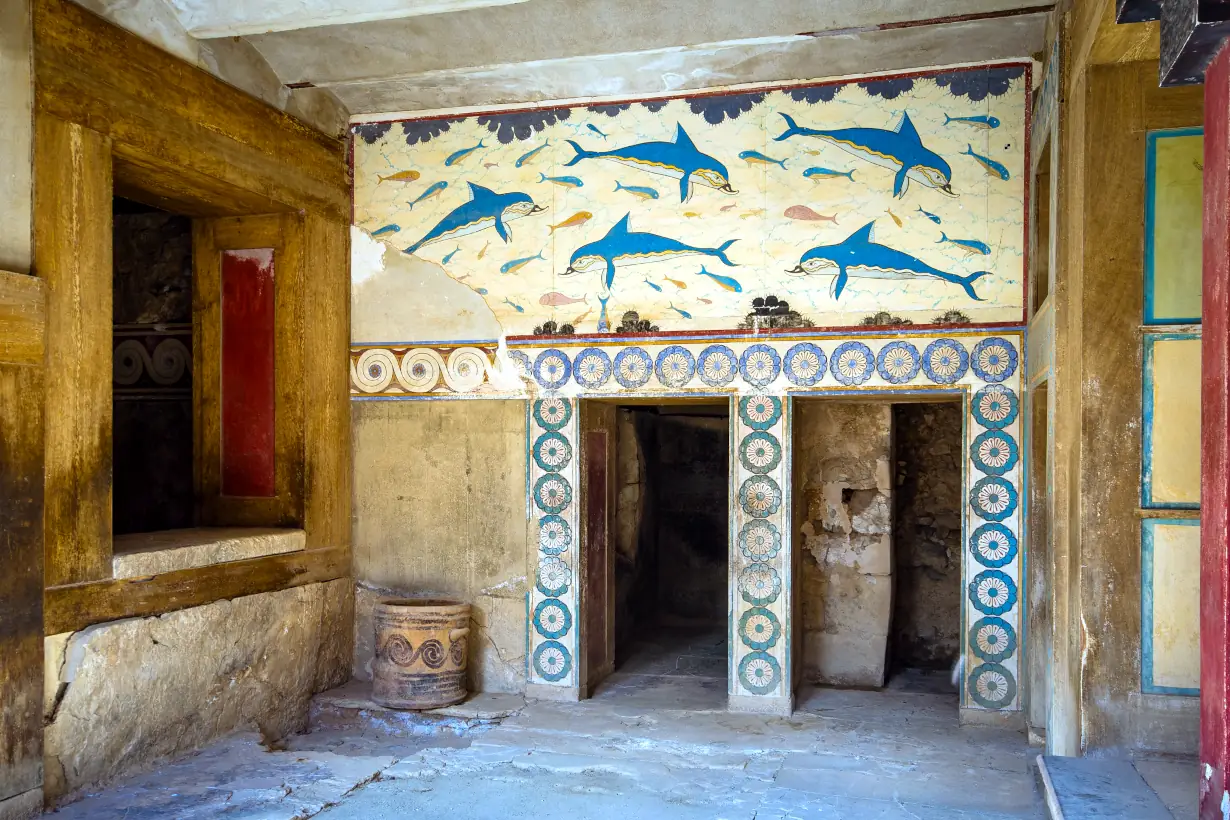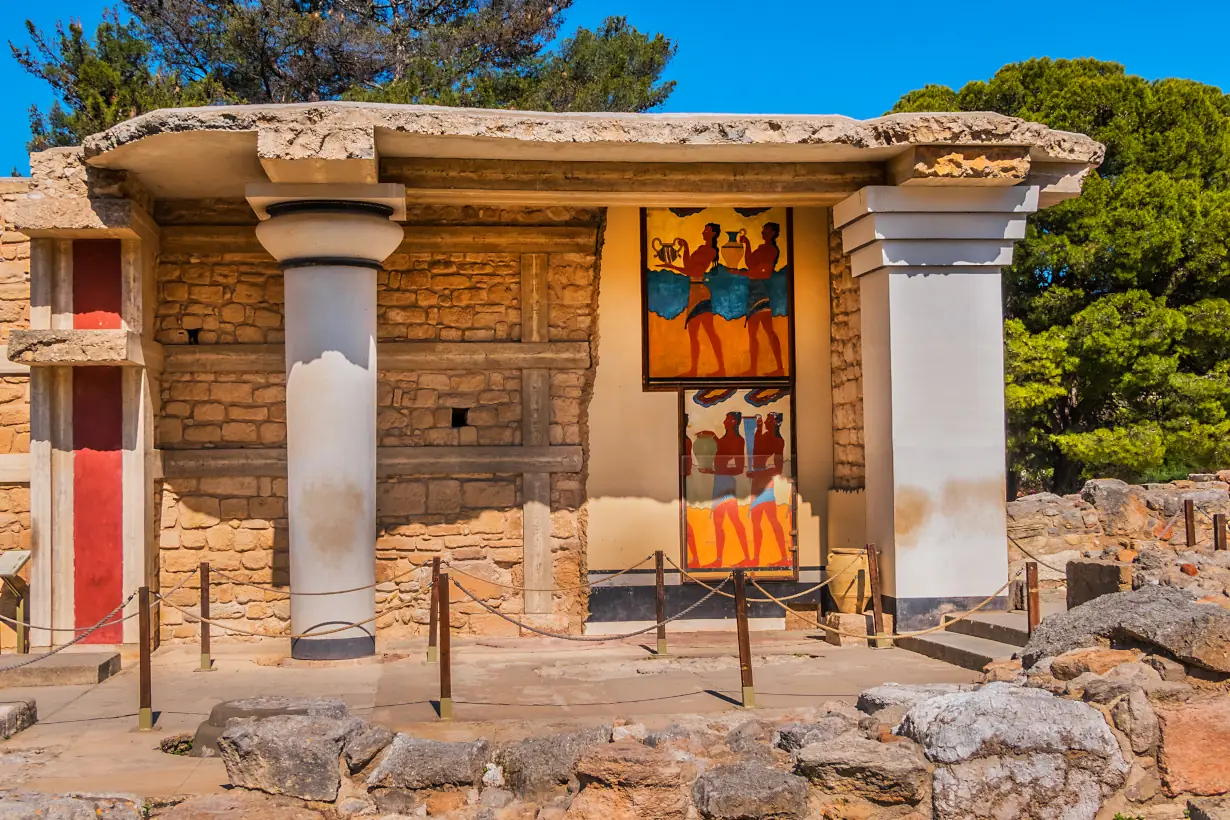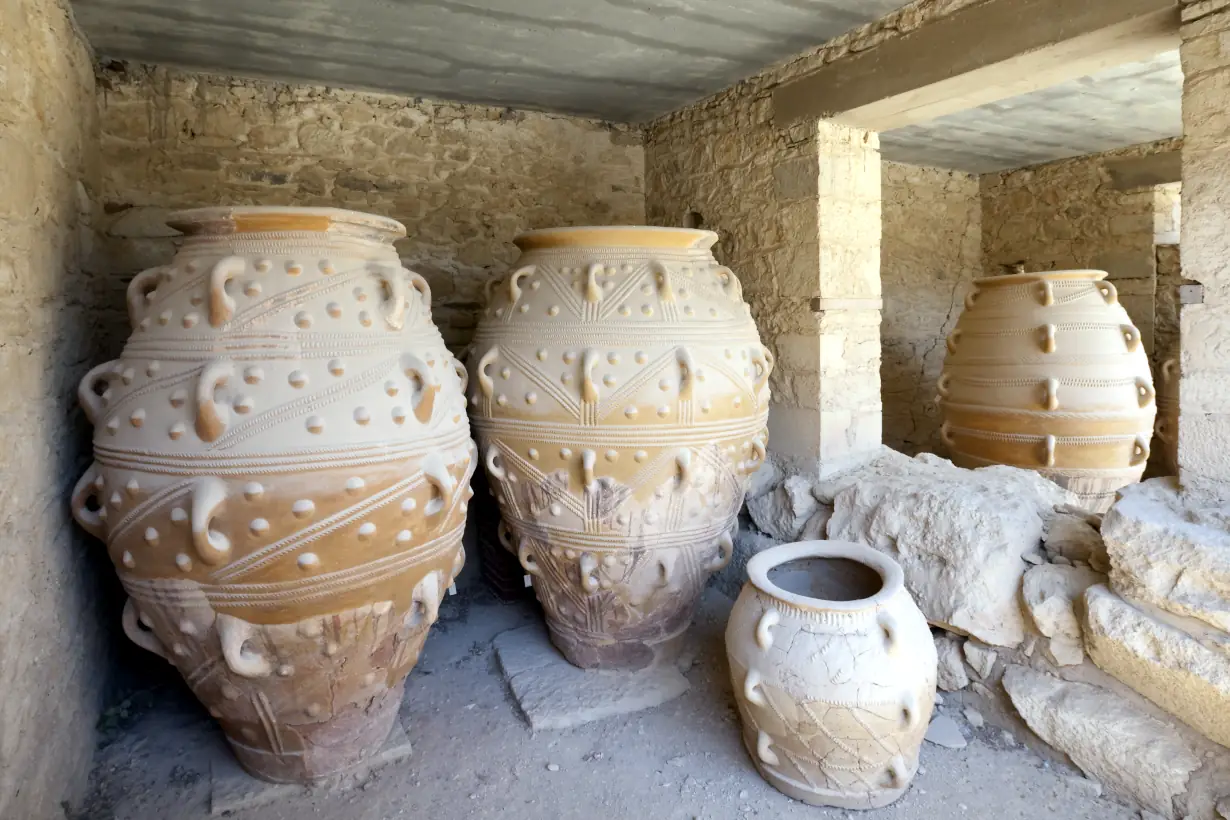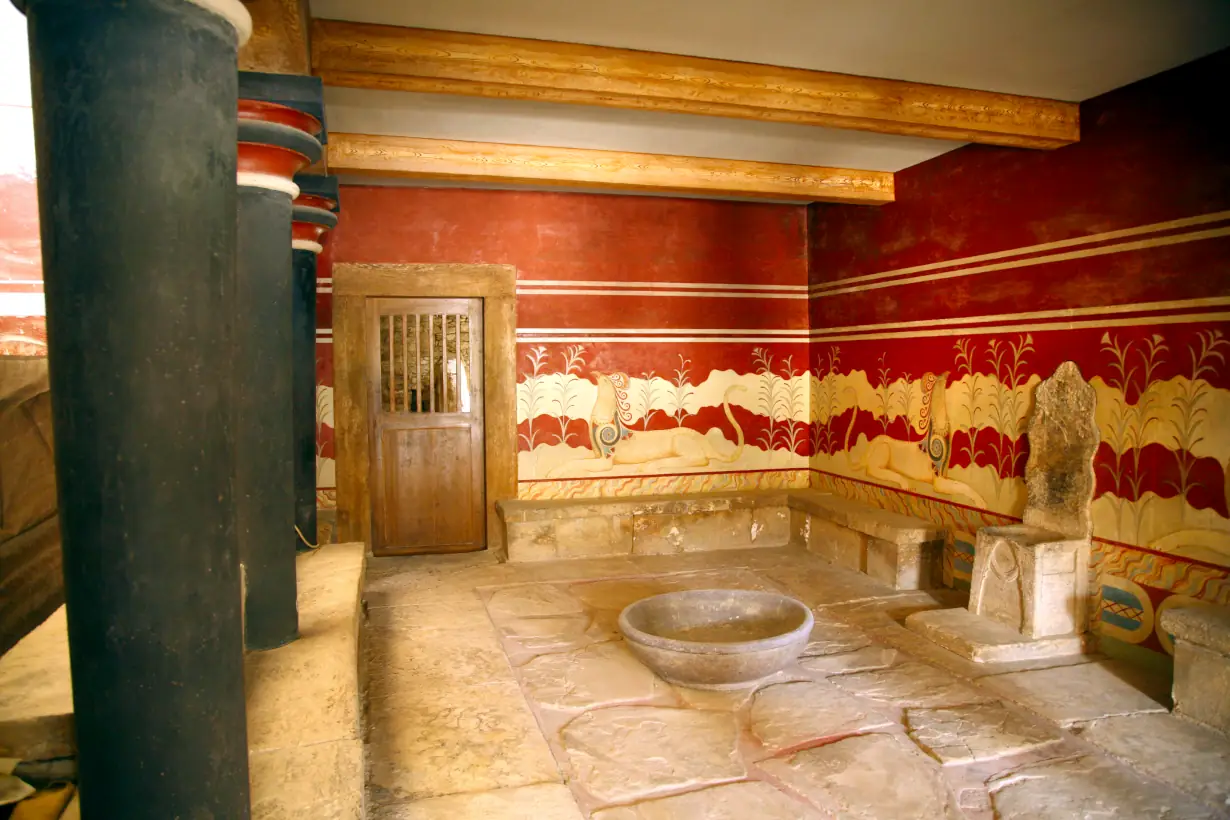The Minoan Palace of Knossos
The ancient site near the island's capital Iraklio has achieved worldwide fame through the magnificent palace of Knossos. The gigantic palace is one of the largest Minoan buildings on the island and impresses even today with its excellently preserved structures and wall paintings.
The municipality of Knossos was densely populated from the Neolithic to the Byzantine period. Its heyday fell on the 17th century BC, when Knossos rose to become a leading city-state and the religious and political centre of the island.
Today you can admire the five-storey palace with an area of around 21,000 square metres. Around 800 rooms, rich decorations, elaborate staircases, magnificent columns, breathtaking murals and colourful frescoes give you a small impression of the splendour that must have once reigned here.
The extensive, richly decorated palace complex was built during the heyday of the Minoan civilisation in the 2nd millennium BC. Europe's oldest advanced civilisation was named after the legendary King Minos, the son of Zeus and Europa. It remained lost for thousands of years.
It was not until 1900 that the English archaeologist Sir Arthur Evans discovered the palace of Knossos. Since then, excavations have brought Crete's ancient cities to light one after the other.
As early as 2000 BC, there were several kingdoms on Crete. One can speak with certainty of three kingdoms in Knossos, Festos and Màllia. Between 1700 and 1300 BC, however, Knossos ruled over the whole island. The symbol of its power is the spectacular palace complex. Only a few remains of this ancient palace have survived the millennia. But you can marvel at the impressive ruins of the newer palace from the 15th and 14th centuries BC.
Take a voyage of discovery in the magnificent palace: admire the throne room and the fresco of the prince of the lilies, walk through the storerooms with the huge clay pots or the queen's chambers with the dolphin mural and the royal bathtub.
Thanks to the reconstructions by archaeologist Sir Arthur Evans, we now have a picture of the beauty of this winding palace complex, with more than a thousand chambers, staircases and light shafts. Some chambers were luxuriously furnished with bathtubs, toilets and running water.
King Minos is said to have been the first king of Crete to ensure prosperity and peace. In fact, the island was predestined to become an advanced civilisation due to its geographical location between three continents and thanks to a diverse wealth of natural resources and creative inhabitants.
The Minoans had a well-equipped fleet and were active in trade outside the island. This is how they consolidated their rule for over 1000 years. Archaeologists are still finding new traces of this fascinating culture and trying to unravel the different writing systems of the Minoans. Numerous finds also attest to the blossoming of arts and crafts in Crete at this time. Summit sanctuaries, cult caves, necropolises and palace centres are spread all over the island.
You are in category:
You might also be interested in:
Experience Crete Your itinerary contains 1 experience
gorgeous
beaches romantic
old towns fascinating
ancient sites imposing
gorges delightful
boat trips extraordinary
stalactite caves adventure
& thrills secluded
monasteries gourmet
restaurants culinary
products






